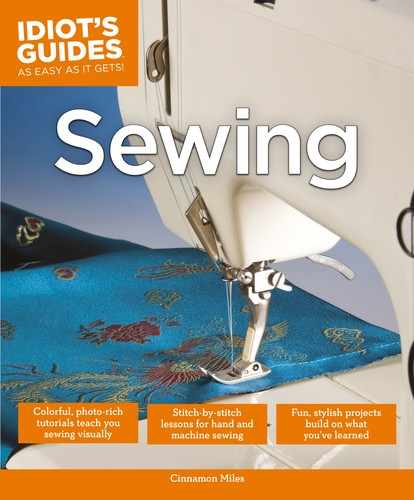
130 Part 3: More Techniques
Both functional and decorative, tucks can add a bit of
interest to an otherwise plain-looking project. These long,
narrow folds can be used to accent a pillow, add a design
element to the bottom edge of a skirt, or make the clas-
sic pin tuck–style tuxedo shirt!
It’s easiest to use a thin, crisp fabric that will hold a crease
when pressed, since this technique is done by following
the guide of lots of pressed folds. Stitching a straight line
is all you need to know to create this rather complicated-
looking design.
Press a line
3
⁄
4
inch (2 cm) from the edge of the
fabric. Slide the fabric back to measure
3
⁄
4
inch
(2 cm) again.
Using the tip or edge of the iron, press the fold
down the length of the fabric, creating a crisp
crease.
Tucks
What You Need
• Seam gauge
• Iron
• Straight pins
1 2
Right side
Wrong side
mmCH9_Sewing.indd 130 5/23/13 3:38 PM

131Chapter 9: Pleats, Tucks, and Darts
Continue to slide the fabric to the left, and press
every
3
⁄
4
inch (2 cm). Do this for as many tucks as
you’d like to create.
Sew a straight stitch down the length of each fold
using a
1
⁄
8
-inch (.3 cm) seam allowance from the
fold edge. Use the inside of the foot as a guide.
3
4
5 6
After all the rows are sewn, press all the folds to
one side.
Your tucks are now complete and ready to be
used in your sewing project.
The tucks are pressed to one
side. The top of the fabric
is folded over to show the
reverse side.
Tucks can be vertical
or horizontal.
Notice the raw edge of
the fabric and the first
tuck are sewn.
mmCH9_Sewing.indd 131 5/23/13 3:38 PM
..................Content has been hidden....................
You can't read the all page of ebook, please click here login for view all page.
